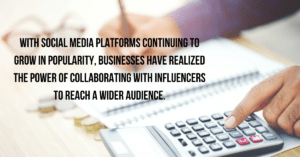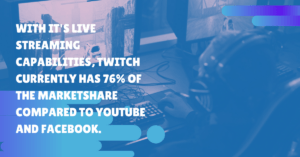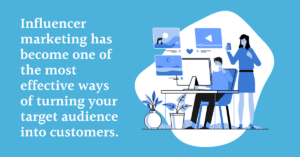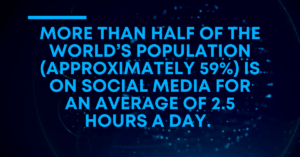On June 4, Instagram announced their plan for “branded content ads”, which allow advertisers to use sponsored posts from influencers as their brand’s personal ads. This takes the previously established “influencer sponsored posts” a step further, allowing the brands to use the organic photos from the influencer account as advertisements–meaning they can (and will) appear in your Instagram feed, whether or not you follow the influencer. In the ever-changing relationship between influencers and brands, this means a few things:
- Influencers will get more exposure through the reach of the companies they are partnering with. The original sponsored relationship was that brands expose their products and services via the influencer network and channels. Now the situation is flipped, allowing advertisers to introduce the partnered influencer to their broader networks. This can expose a wider audience to influencers that they may like, or irritate Instagram users with the amount of irreverent people on their feed. Due to this increased exposure, influencers will also have more incentive to partner with companies and brands that closely align with their image, creating more meaningful partnerships for better content.
- Branded content ads will also lend an additional layer of transparency to influencers. The Federal Trade Commission already requires influencers to include recognition of sponsorship through a hashtag like “#ad”, but branded content ads will include “Sponsored” at the top of posts, as well as “Paid partnership with” above the post captions. In an effort to increase transparency, this makes partnerships more clearly visible to the consumer.
But how will this affect the average Instagram user?
We conducted an online survey asking consumers how they feel about the Instagram update, and their general feelings around influencers and brands. Out of 622 Instagram users living in the U.S., 89% of consumers have strict personal guidelines for curating their social feeds, saying they’re selective about which brands and influencers they follow on Instagram. More importantly, the survey revealed information that brands looking to adopt branded content ads can utilize to increase their success.
Download the full infographic and findings here.
Here’s what we found:
The current majority of Instagram users are young-to-middle-aged adults. The participating demographic was an almost-even split, with 44% of respondents identifying as male and 56% identifying as female. The average age of all respondents was 35, with no compelling variances in responses from generational groups (Millennial vs. Gen X vs. Boomer, etc.). Using this survey in conjunction with previous studies done by the Pew Research Center, this trend in demographic can help brands identify what kind of influencers that their consumers want to see. 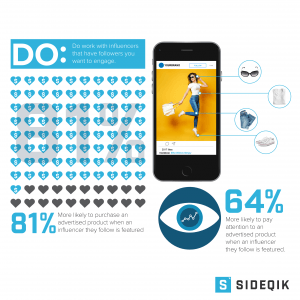
Branded content ads featuring influencers that the consumer currently follows are more likely to make an impact on purchasing habits. At 81%, an overwhelming majority of survey respondents are “more likely to say they would purchase an advertised product” from an ad featuring a familiar influencer than one they don’t follow. Breaking it down even further: if branded content ads use influencers that consumers currently follow, 66% of respondents said they would be “more likely to purchase the advertised product” and 64% said they would be “more likely to pay attention to [the ad]”. 70% of respondents also said they are “more likely to purchase [through an ad] compared to traditional Instagram ads” if the advertisement features an influencer they currently follow.
The language used in this survey noted potential action as well as direct action, both of which are represented in the data above. Branded content ads increase the potential action of consumers, meaning they are “more likely” to engage in purchasing habits and “more likely” to speak to others about their endorsement of branded content ads through familiar influencers.
Branded content ads seem simple and straightforward, but implementation strategies will determine how successful they are in practical applications.
Although these points denote a positive reaction from consumers towards branded content ads, there are still some aspects that advertisers need to be wary of while promoting their content. Here are some consumer concerns that if addressed correctly, brands can use to enhance their influencer ads.
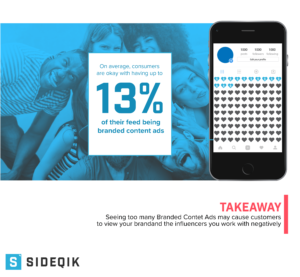 An overload of ads from brands and influencers would negatively impact the consumer’s perception of both the brands and the influencers. Although a little more than half of survey respondents (54%) are comfortable with ads if they “help discover new products or brands or new influencers to follow”, an overwhelming majority agree that “too many branded content ads would negatively impact their outlook” on both the brand (81%) and the featured influencers (80%). On average, the respondents said they would be “willing to have up to 13% of their Instagram feed comprised of branded content ads”, meaning there is a universal acceptance of ads on Instagram, and that consumers are not opposed to the idea of branded content.
An overload of ads from brands and influencers would negatively impact the consumer’s perception of both the brands and the influencers. Although a little more than half of survey respondents (54%) are comfortable with ads if they “help discover new products or brands or new influencers to follow”, an overwhelming majority agree that “too many branded content ads would negatively impact their outlook” on both the brand (81%) and the featured influencers (80%). On average, the respondents said they would be “willing to have up to 13% of their Instagram feed comprised of branded content ads”, meaning there is a universal acceptance of ads on Instagram, and that consumers are not opposed to the idea of branded content.
Brands and influencers need to utilize a balance when using branded content ads, and when partnering in sponsorship. With more consumers able to directly see the relationship between brands and influencers due to increased transparency, ad overload would diminish the trust and authenticity sought after in influencers to begin with. Avoid this, and avoid tarnishing the influencer as well as the integrity of the brand.
Irrelevant ads would negatively impact the consumer’s perception of both the brands and the influencers. Although 59% of survey respondents are comfortable seeing branded content ads from influencers they don’t follow, the content has to be relevant to their personal interests. 83% of respondents said irrelevant ads would negatively impact their perception of the specific brand, and 82% of respondents said irrelevant ads would negatively impact their image of the featured influencers.
Overall, Instagram is progressing their relationship with advertisers and influencers, and this new feature allows for further exploration of brands and influencers. If used correctly, this can positively increase the amount of engagement consumers have with companies, but if taken too far it can also drive those existing fan bases away. What steps can advertisers and influencers take to find a happy medium that allows both brands to grow?
To learn the do’s and don’ts of Instagram and Influencer advertising, download the full infographic now.
Nancy Rothman
Latest posts by Nancy Rothman (see all)
- How Travel Brands Can Use Influencer Marketing to Stay Afloat as the Pandemic Continues - February 22, 2022
- Influencer Marketing Trends to Watch (And Prepare For) in 2022 - December 31, 2021
- A Guide: How to Recruit the Right Influencers for Your Brand - December 30, 2021


